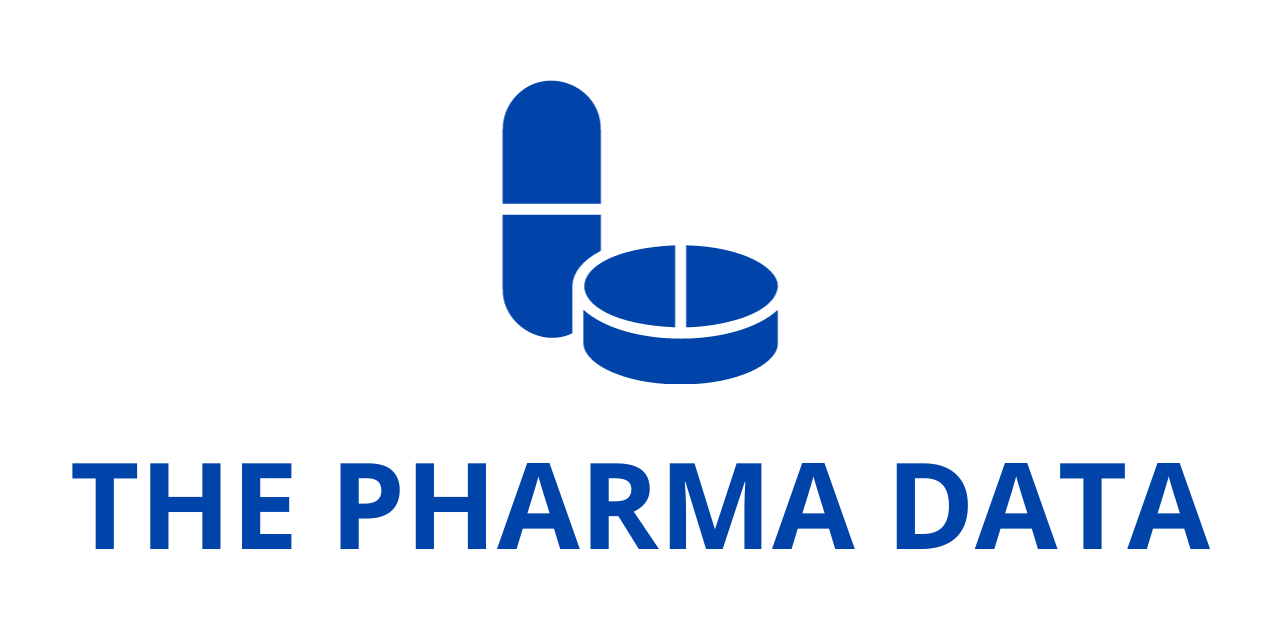
FDA Grants Orphan Drug Designation to Tinostamustine for the Treatment of Malignant Glioma
Purdue Pharma L.P. (“Purdue”) today announced that the U.S. Food and Drug Administration (FDA) has granted Orphan Drug Designation (ODD) to its investigational therapy tinostamustine for the treatment of malignant gliomas, a diverse and highly aggressive group of brain and spinal cord tumors that affect both adult and pediatric patients. This designation recognizes tinostamustine as a potential therapeutic option for a disease that currently lacks curative treatment and represents a significant unmet medical need.
Malignant gliomas include several tumor types, such as glioblastoma (GBM), an especially aggressive form characterized by rapid growth, treatment resistance, and poor survival rates. According to the Central Brain Tumor Registry of the United States (CBTRUS), approximately 22,000 new cases of malignant gliomas are diagnosed each year across the United States.¹ The FDA grants Orphan Drug Designation to encourage the development of new treatments for rare diseases or conditions that affect fewer than 200,000 people nationwide.
Addressing an Urgent Unmet Need in Glioblastoma
Purdue is currently investigating tinostamustine as a potential therapeutic option for glioblastoma multiforme, the most common and lethal form of malignant glioma. Glioblastoma accounts for nearly half of all malignant brain tumors and remains among the most difficult cancers to treat. Despite decades of research, current therapies—including surgery, radiation, and temozolomide chemotherapy—typically extend life by only a few months.² Most patients face a median survival time of roughly 15 months following diagnosis, and fewer than 5% survive beyond five years.³
The ODD application submitted by Purdue was supported by a robust package of epidemiologic data, preclinical research, and early clinical findings, Orphan Drug all of which provide a strong mechanistic rationale for further evaluation of tinostamustine. The FDA’s designation reflects the growing body of evidence suggesting that tinostamustine could offer a novel approach to treating glioblastoma and other malignant gliomas, potentially improving survival outcomes and quality of life for patients and their families.
As many as 15,000 people in the United States are diagnosed with glioblastoma each year.³ Unfortunately, despite advances in neurosurgery, radiation therapy, and chemotherapy, there remains limited survival benefit with existing treatment Orphan Drug options,” said Julie Ducharme, Ph.D., Vice President and Chief Scientific Officer at Purdue Pharma. “This recognition from the FDA marks an important milestone in our mission to advance innovative science in areas of serious and underserved medical need. We are encouraged by the early data and look forward to continuing our research into tinostamustine’s potential as a novel therapeutic option for glioblastoma.”
About Orphan Drug Designation and Its Importance
The FDA’s Orphan Drug Designation program was established under the Orphan Drug Act of 1983 to incentivize the development of drugs and biologics for rare diseases—conditions that, by definition, affect fewer than 200,000 people in the U.S.⁴ This program provides several key benefits to drug developers, including:
- Tax credits for qualified clinical trial costs
- Exemption from certain FDA user fees, such as New Drug Application (NDA) fees
- Eligibility for seven years of market exclusivity upon approval
These incentives are designed to help offset the substantial costs and risks associated with developing therapies for small patient populations, ensuring that Orphan Drug promising innovations continue to reach the patients who need them most.⁵
In the case of tinostamustine, the ODD designation may help accelerate its clinical development and regulatory review, enabling Purdue to advance the drug through the next phases of research more efficiently.
Tinostamustine: A Dual-Mechanism Investigational Therapy
Tinostamustine represents a potential first-in-class, new chemical entity that integrates two complementary mechanisms of action in a single molecule. It combines:
- Bifunctional alkylating activity – which directly damages DNA in cancer cells, disrupting their ability to replicate and survive; and
- Pan-histone deacetylase (HDAC) inhibition – which modulates gene expression and chromatin structure, potentially sensitizing tumor cells to DNA damage and enhancing the effects of chemotherapy or radiation.
This dual mechanism gives tinostamustine the potential to overcome some of the molecular resistance pathways that limit the efficacy of standard treatments in glioblastoma.
Preclinical studies have demonstrated tinostamustine’s ability to cross the blood-brain barrier, a critical challenge in neuro-oncology drug development. Early research also suggests it may enhance tumor cell sensitivity to radiation and DNA-damaging agents Orphan Drug while sparing healthy tissue—an essential consideration for patients whose cognitive and neurological functions are already compromised by tumor burden.
Behind every designation like this are real people—patients and families—facing the devastating reality of malignant gliomas, especially glioblastoma,” said Craig Landau, M.D., President and CEO of Purdue Pharma. “We are deeply committed to pursuing this medicine, which has the potential to bring hope where few options exist today. Tinostamustine represents a step forward in our broader mission to address urgent unmet needs in oncology through scientific innovation.”
Collaborating to Advance Clinical Development
In alignment with its commitment to collaborative innovation, Purdue recently entered into a clinical development agreement with the Global Coalition for Adaptive Research (GCAR) to study tinostamustine within GBM AGILE (Glioblastoma Adaptive Global Innovative Learning Orphan Drug Environment, NCT03970447)—a global, adaptive platform trial specifically designed to evaluate and accelerate promising glioblastoma treatments.

GBM AGILE employs an adaptive trial design, allowing researchers to evaluate multiple therapeutic candidates simultaneously and modify study arms in real time based on emerging data. This approach is designed to shorten the time required to identify effective treatments while maintaining scientific rigor. The inclusion of tinostamustine in GBM AGILE underscores the scientific community’s recognition of its potential and ensures that data generated from the study will contribute to a more comprehensive understanding of how to best treat glioblastoma.
Dr. Landau added, “Participating in GBM AGILE allows us to evaluate tinostamustine’s potential in a highly efficient, data-driven setting. We are honored to collaborate with GCAR and other global research partners to bring forward innovative solutions for patients who urgently need better options.”
Understanding Malignant Gliomas and Glioblastoma
Malignant gliomas are among the most complex and devastating cancers, arising from glial cells that support and protect neurons in the brain. They encompass several tumor grades and histologies, including astrocytomas, oligodendrogliomas, and glioblastomas. Among these, glioblastoma (WHO Grade IV) is the most aggressive form, characterized by extensive infiltration into Orphan Drug surrounding brain tissue, making surgical removal nearly impossible without causing significant neurological damage.
Symptoms often include severe headaches, seizures, personality changes, and cognitive or motor impairment, depending on the tumor’s location. Diagnosis typically involves advanced imaging (MRI), followed by biopsy for histopathological confirmation and molecular profiling.
Treatment remains multimodal, typically involving surgical resection, radiation therapy, and temozolomide chemotherapy. Despite this aggressive approach, recurrence is almost universal, highlighting the urgent need for therapies that target tumor biology more effectively.
Tinostamustine’s mechanism—combining DNA alkylation and HDAC inhibition—represents an innovative attempt to disrupt the molecular resilience that allows glioma cells to survive current therapies.
Commitment to Patients and Ethical Research
Purdue emphasizes that tinostamustine remains an investigational agent, not yet approved by the FDA or any regulatory authority for any indication. The company is committed to maintaining the highest standards of scientific integrity, patient safety, and ethical transparency as it advances clinical research.
The company’s broader oncology pipeline reflects its evolving commitment to developing therapies for rare and challenging diseases. Through partnerships with research institutions, advocacy organizations, and regulatory agencies, Purdue seeks to help transform the treatment landscape for patients affected by central nervous system malignancies.
Purdue also continues to engage with patient advocacy groups to ensure that trial designs and access programs align with the real-world needs of patients and caregivers navigating glioma diagnoses.
Next Steps and Research Outlook
With ODD status now granted, Purdue will continue to evaluate tinostamustine through a comprehensive clinical program, including participation in the ongoing GBM AGILE trial. Data from these studies will inform future regulatory interactions and potential submission strategies.
Early-phase studies have shown encouraging signs of anti-tumor activity and manageable safety profiles, supporting continued investigation. Purdue’s research teams are also exploring tinostamustine’s potential application in other malignancies characterized by DNA Orphan Drug repair defects or HDAC dysregulation, potentially broadening its therapeutic reach beyond glioblastoma.
Should tinostamustine eventually receive FDA approval, the orphan drug designation will provide seven years of marketing exclusivity in the U.S., allowing Purdue to invest in further research, patient support programs, and access initiatives.
A Message of Hope for Patients and Families
For patients and families impacted by malignant gliomas, new treatment options often mean more than extended survival—they represent renewed hope. The FDA’s Orphan Drug designation acknowledges not only the scientific promise of tinostamustine but also the perseverance of those living with and fighting against these devastating cancers.
“Every step forward in glioma research brings us closer to better outcomes,” said Dr. Ducharme. “While much work remains, designations like this validate the Orphan Drug urgency of our mission and remind us why we must continue pushing boundaries in oncology research.”
About Purdue Pharma L.P.
Purdue Pharma L.P. is a privately held pharmaceutical company committed to advancing meaningful medicines in areas of high unmet medical need. The company’s research priorities include neuroscience, oncology, and rare diseases, with a Orphan Drug focus on leveraging innovative science to improve patient outcomes. Through collaboration with academic institutions, global consortia, and patient communities, Purdue aims to contribute to the development of sustainable, ethical, and effective therapeutic solutions. For more information, visit www.purduepharma.com.
References
- Price M, Ballard C, Benedetti J, Neff C, Cioffi G, Waite KA, Kruchko C, Barnholtz-Sloan JS, Ostrom QT. CBTRUS Statistical Report: Primary Brain and Other Central Nervous System Tumors Diagnosed in the United States in 2017–2021. Neuro Oncol. 2024 Oct 6;26(Supplement_6):vi1–vi85. doi:10.1093/neuonc/noae145. PMID: 39371035; PMCID: PMC11456825.
- Glioblastoma (GBM). Cleveland Clinic. Accessed September 24, 2025. https://my.clevelandclinic.org/health/diseases/17032-glioblastoma
- Glioblastoma Foundation. Glioblastoma Brain Tumor Information. https://glioblastomafoundation.org/patients/glioblastoma-brain-tumor-information
- U.S. Food & Drug Administration. Designating an Orphan Product: Drugs and Biological Products. Updated August 2024. Accessed October 22, 2025. https://www.fda.gov/ForIndustry/DevelopingProductsforRareDiseasesCo
- U.S. Government Publishing Office. Electronic Code of Federal Regulations, 316.21: Verification of Orphan-Drug Status. Accessed March 25, 2019. https://www.ecfr.gov/cgi-bin/retrieveECFR
Source Link: https://www.businesswire.com/




